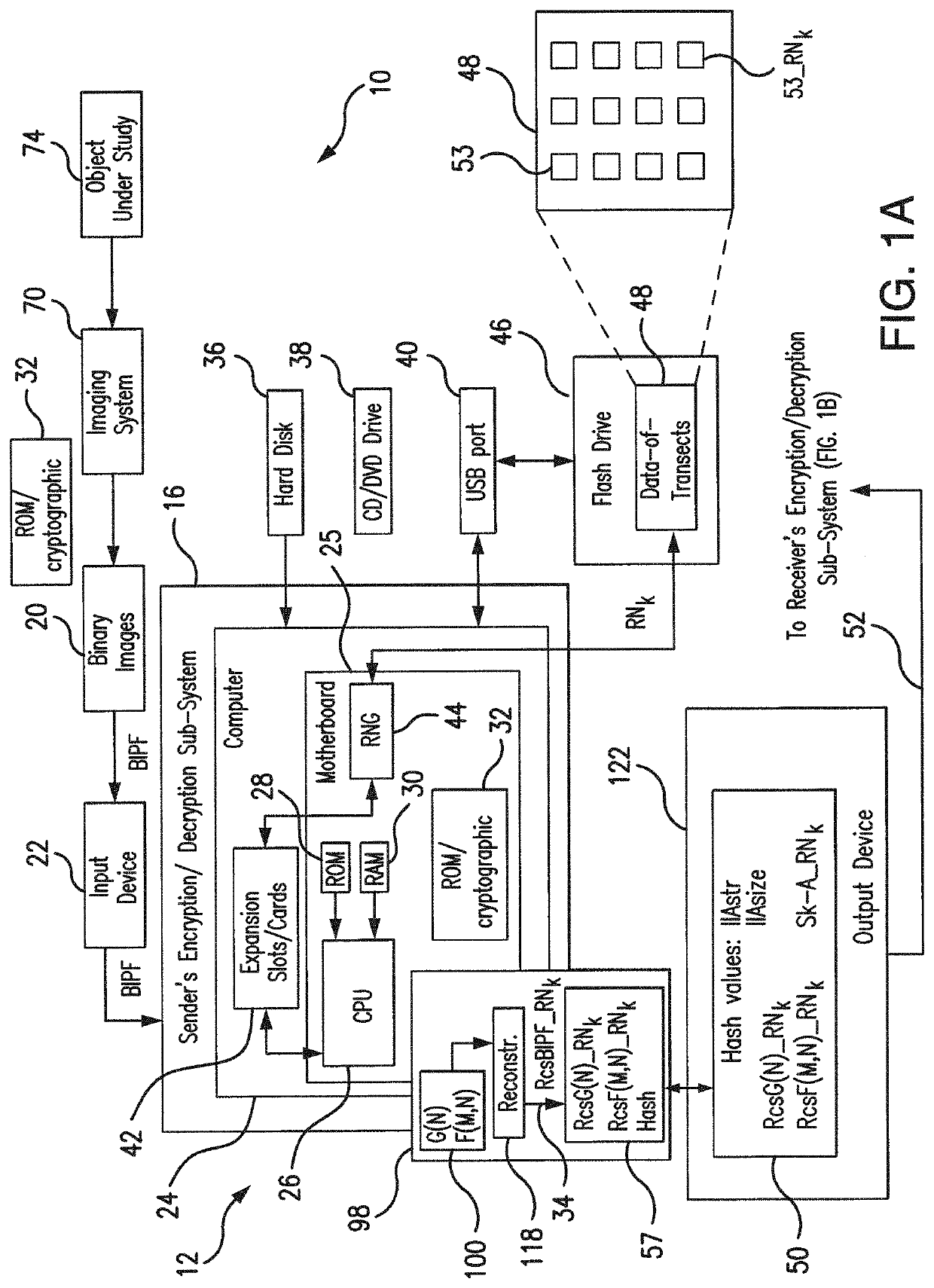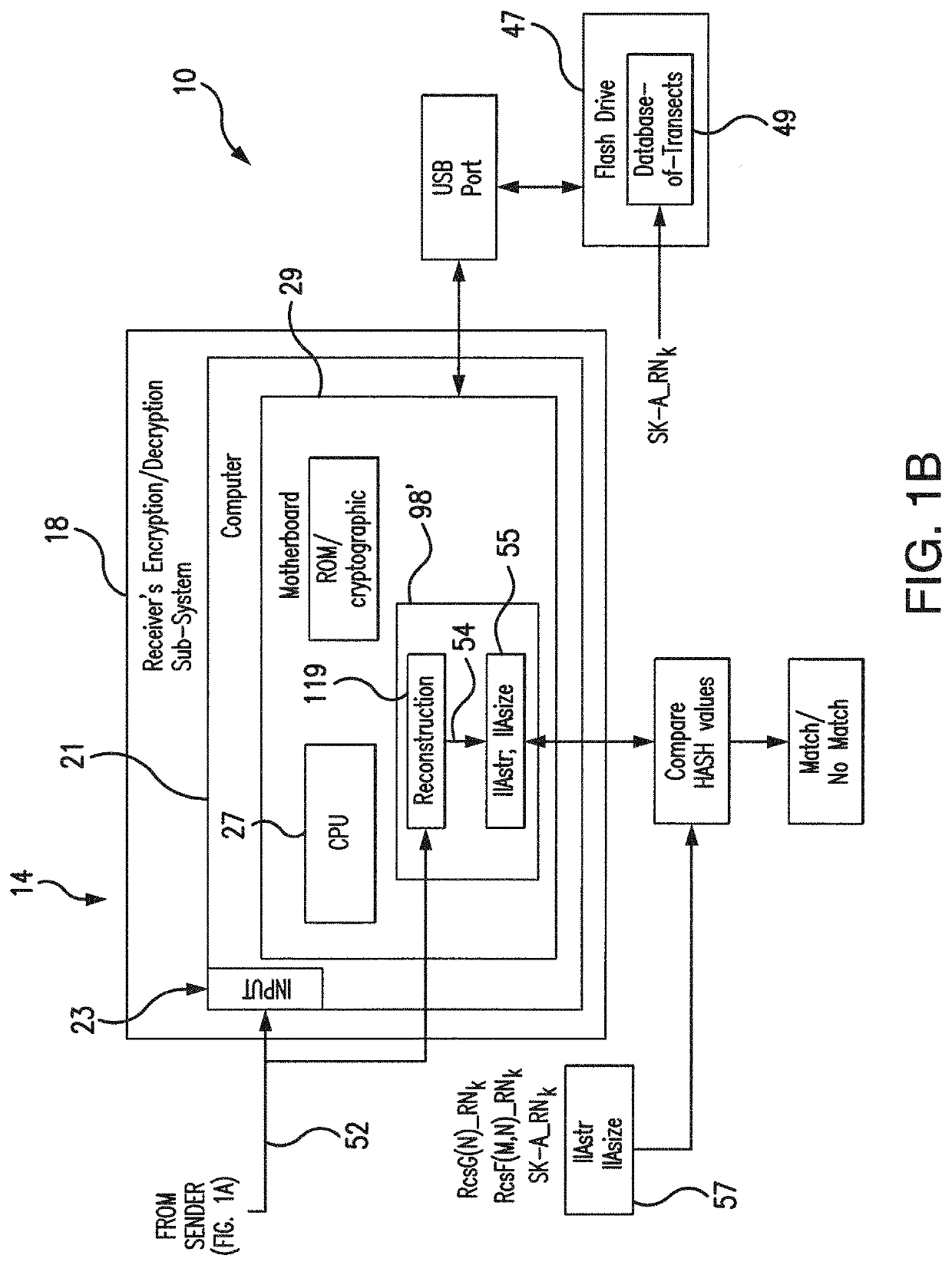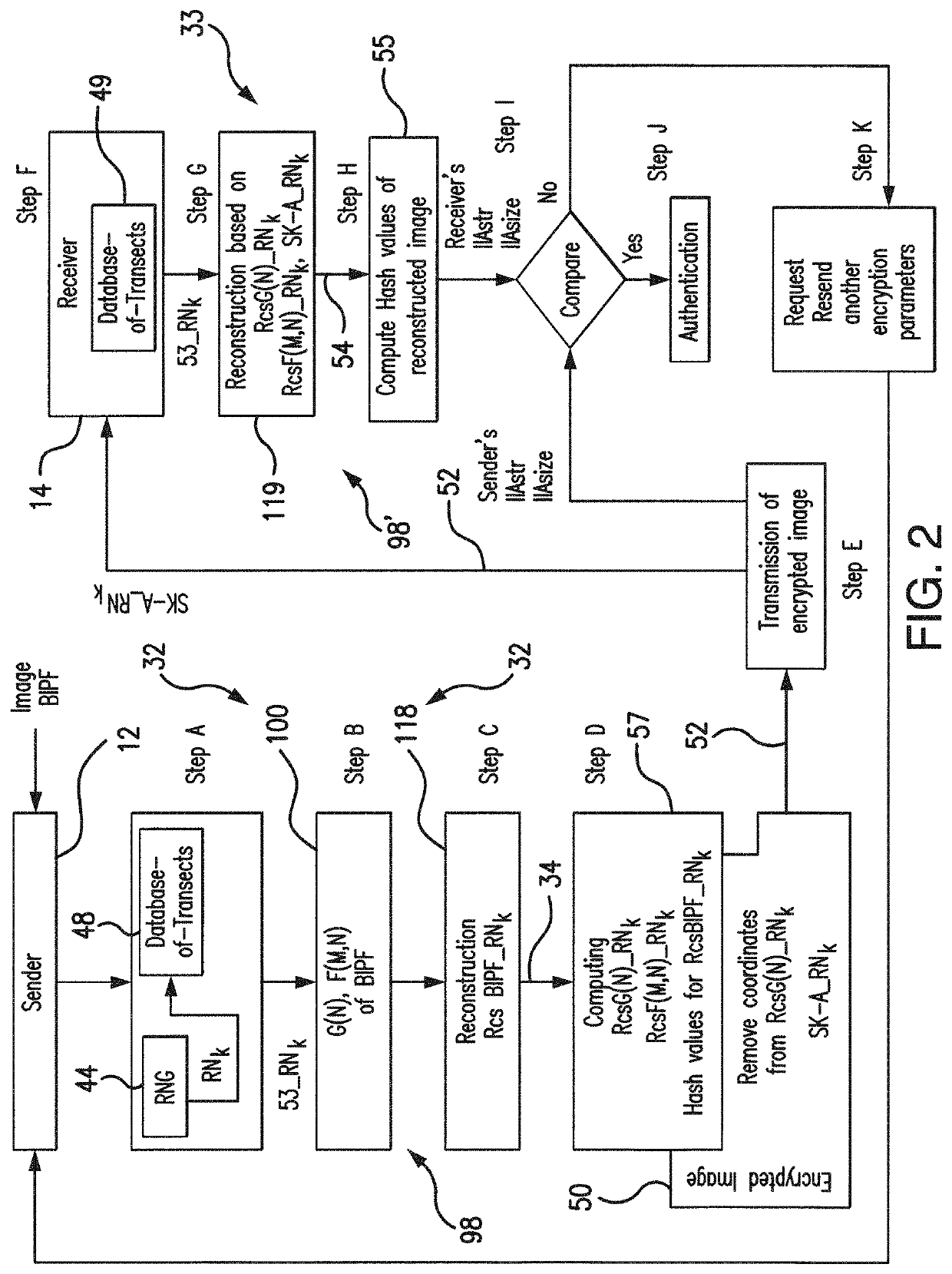System and method for encryption/decryption of 2-D and 3-D arbitrary images
- Summary
- Abstract
- Description
- Claims
- Application Information
AI Technical Summary
Benefits of technology
Problems solved by technology
Method used
Image
Examples
Embodiment Construction
75]Referring to FIGS. 1A-1B, 2, 4, and 5-8, the subject system 10 for encryption / decryption of an arbitrary 2-D or 3-D image uses a computer system adapted specifically to support a unique approach for images encryption / decryption which avoids the individual pixels encryption / decryption, but operate with representations of the structural and dimentional properties of an image in its entirety. The subject system and method operate with the N-partite graph G(N) and the Table F(M,N) of arbitrary images, which are numeric representations of the structure and dimentons, respectively, of an arbitrary image, as will be detailed in further paragraphs.
[0276]The subject system 10 is uniquely equipped for a processing assuming routine application of various sets of transects T1, . . . , TN to a binary image as a tool which permits to convert binary image into its quantitative representations, i.e., G(N) and F(M,N). The subject system also uses transects to solve the reverse problem, i.e., to r...
PUM
 Login to View More
Login to View More Abstract
Description
Claims
Application Information
 Login to View More
Login to View More - R&D
- Intellectual Property
- Life Sciences
- Materials
- Tech Scout
- Unparalleled Data Quality
- Higher Quality Content
- 60% Fewer Hallucinations
Browse by: Latest US Patents, China's latest patents, Technical Efficacy Thesaurus, Application Domain, Technology Topic, Popular Technical Reports.
© 2025 PatSnap. All rights reserved.Legal|Privacy policy|Modern Slavery Act Transparency Statement|Sitemap|About US| Contact US: help@patsnap.com



